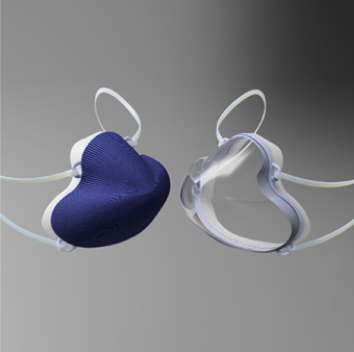JHU undergrads named finalists in global mask design challenge
A Johns Hopkins University team of 24 undergraduate students that’s come up with a clear, adaptable face mask is among five finalists in a global challenge to design a better mask.

IMAGE CREDIT: COURTESY OF TEAM POLAIR
The XPRIZE Next-Gen Mask Challenge, sponsored by the California innovation nonprofit XPRIZE, is for people 24 and younger around the world. The winner will be announced Dec. 15 after a virtual pitch slam. One team will take home the grand prize of $500,000, and two other teams will split $500,000 in categories determined by the judges. Judges will consider ingenuity, effectiveness, style, and the ability to overcome common barriers.
Team Polair is made up entirely of undergraduate biomedical engineering students. The team focused on adaptability, hoping to come up with a design that people would actually want to wear. They devised a magnetically attaching modular mask with a soft silicone frame and customizable front attachments including a clear, anti-fogging front and an N95 front. Wearers can either use precut filters or create their own from stencils.
“Our team members have incredibly diverse experiences, hailing from hometowns in 14 states and four countries,” said team captain Jerry Zhang, a second-year biomedical engineering major. “It has really shaped our design philosophy and resulted in a mask that could accommodate anyone, anywhere.”
With students trying to work together from so far apart, the team collaborated through online meeting spaces like Zoom and Slack.

Image caption:Polair masks include a face frame and interchangeable mask attachments, including a clear, anti-fogging mask.
IMAGE CREDIT: COURTESY OF TEAM POLAIR
Creating a prototype remotely was also challenging, Zhang said. They made it work with access to a 3D printer to fabricate pieces designed by their CAD team and help from the Whiting School of Engineering to create vacuum-formed pieces.
“It’s quite challenging designing something with the potential to help many people since everyone has their own needs and preferences,” said team member Charles Wang, a third-year student. “Here is where I think our large team size really made a difference, since we were able to integrate many different perspectives into our final design.”
The mask designs for all of the finalists were tested to make sure they meet the same safety standards as surgical masks.
The finalists include other U.S.-based teams, a team from Nigeria, and an international team with students based in several countries.

